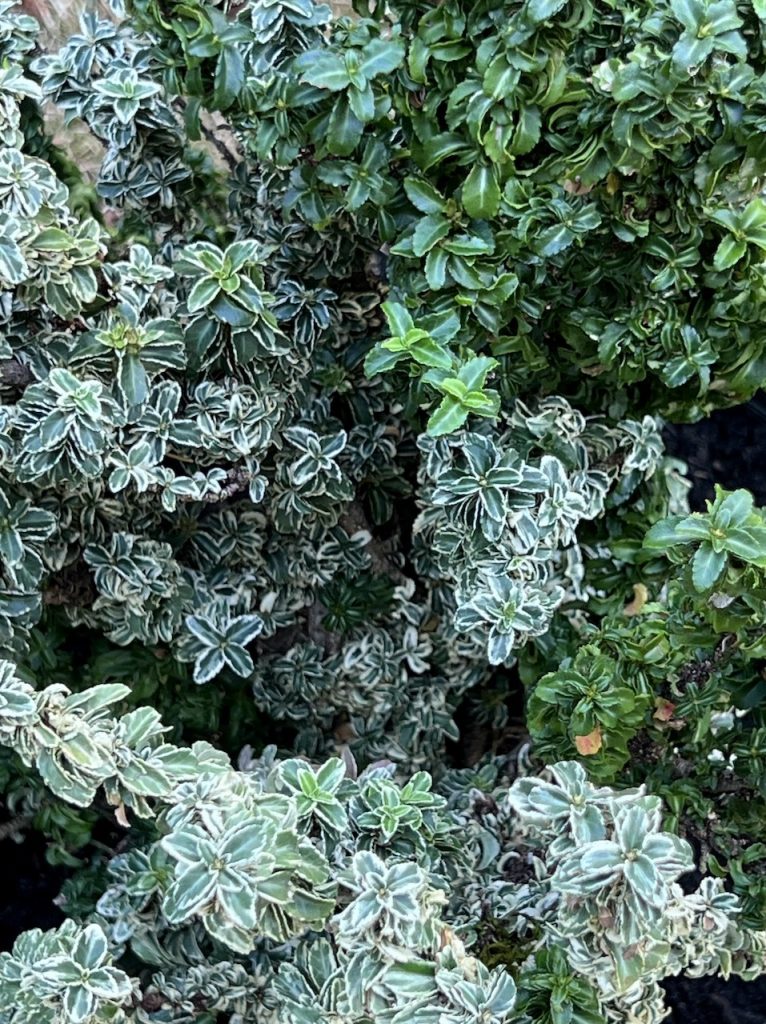
Every plant in a landscape planting plan has a specific part in a cohesive garden design. Some have a minor role, while others are the star of the show. Plants with star power often have a sculptural character that makes them stand out as dramatic focal points. When featured in a curated planting or repeated in sequence, their architectural stature helps delineate outdoor spaces and provide structure. These outstanding plants take center stage when artfully choreographed against the backdrop of a manicured evergreen hedge or wall.
Below are some plants that will add some flair to your garden.
Ilex crenata ‘Mariesii‘ (Mariesii Dwarf Japanese Columnar Holly) has small grass-green leaves that resemble boxwood, but that’s where the similarity ends. Its structure is open and irregular and each plant has its own unique habit. Stiff glossy leaves point upward around arching branchlets attached to one or more central leaders. Like other Ilex, ‘Mariesii’ is not fussy, but needs a sunny location to thrive. Tip: plant in front of a blank wall or fence and use lighting to create interesting shadow effects at night.
Chamaecyparis lawsoniana ‘Wissel’s Saguaro’ (Wissel’s Saguaro Lawson Cypress) has upright sweeping branches that resemble the arms of a saguaro cactus. Like the cactus, its branches become more substantial with age curving outward and upward from the trunk. Because of its unmistakable silhouette, ‘Wissell’s Saguaro’ is the ideal specimen plant or feature for a dwarf conifer garden. It needs full sun and excellent drainage, but not much supplemental water, making it a great selection for a water-wise garden. Tip: the blue-green sprays pop in combination with yellow and chartreuse foliage.
Euonymus japonica ‘Dr. Rokujo Variegated’ (Dr. Rkujo Variegated Japanese Euonymus) has tiny gray-green variegated leaves edged in white that grow in thick masses on finger-like spires. The leaves look as if they have been stacked and fused together around thick branchlets that point upward from a woody base. Because of its diminutive size—never reaching more than 18″ tall and 12″ wide—it’s a great choice for a container or rock garden. Tip: plant among other dwarf plants in a collector’s garden.
Now is a good time to access your garden and plan upgrades that would add some excitement this spring.
Looking for more ideas? Contact me for a design consultation to learn about landscape design or how to maximize the impact of plantings for any spot in your garden.
